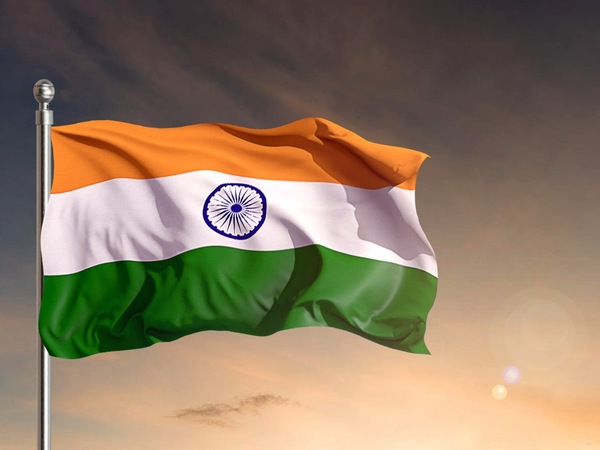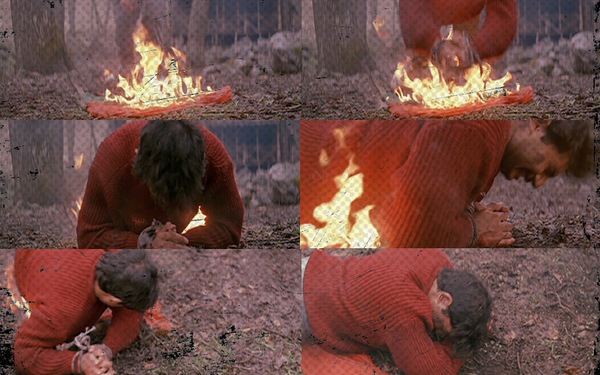10 Scenes Written Around The Indian Flag And What They Say About India

- Team FC
Film Companion
Last Updated: 11.58 PM, Aug 16, 2022

The tricolour to create a sense of irony. The use of the flag-post as a guillotine to execute the corrupt. The flag as a symbol to show us how nothing has changed since Independence. We take a look at 10 scenes that was written around the Indian flag.
In Shaji Kailas’ The King, the tricolour is used to show us how far we’ve come since independence and the new leadership that has replaced the British. Krishnettan (Kuthiravattam Pappu) is a frail and ageing freedom fighter who has come to the Collectorate to appeal to get his pension restarted. He is stopped midway and as he waits for the leaders to arrive, a stampede begins with younger politicians (all dressed in white) knocking him down and breaking his spectacles. In a sequence, we see multiple cars pulling up, each adorned with the Indian flag on its hood. An aged politician, around Krishnettan’s age, emerges from one of these cars. He barely knows where he is and he barely cares. It’s a scene that shows what modern Indian politics has done to the people who fought for the country’s freedom.
In Joshiy’s Praja, the entire climax revolves around the Indian flag with the flag-post becoming the stage for its protagonist Zakir Hussain (Mohanlal) to deliver a long speech that aims to clean up the democracy. In the final sequence, he ties up four of the film’s main villains—an unholy nexus of a politician, a corrupt cop and two businessmen. Despite Zakir Hussain’s personal enmity towards each of them, he asks the people or the praja to decide what they want to do with them. A bomb in the form of a bouquet is given to the politician, when Hussain throws the remote into the crowd. As they are blown up, the tricolour flies away until it floats straight into the hands of a hero in the final shot. Holding onto the flag, he voices the film’s last words…alhamdulillah.
In R Madhavan’s Rocketry, an entire sequence is written around the Indian flag but its symbolism is used to create irony. We’re witnessing how unfairly a great Indian scientist is being treated by the entire System when we see a crane shot that ends with the flag in the foreground and Nambi Narayanan in the background. It is pouring and the man is trying to hitch a ride to get back home with his wife when the news has already spread about his involvement in a spy case. One rickshaw driver pushes him out and onto to the street. As he tries to get back on his feet, helpless and hurt, the camera slowly makes its way until it rests on the image of what India can do to its citizens.

In Mani Ratnam’s Roja, Rishikumar (Arvind Swamy), a RAW agent is captured by terrorists when he is sent to Jammu and Kashmir on a mission along with his wife Roja (Madhubala). The terrorists demand the release of their leader Wasim Khan in exchange for Rishi. While the film shows the efforts of Roja to save her husband, it is Rishi’s bold retorts and conversations with the terrorists that stand out in the film. His love for his country best plays out when he jumps to save a burning Indian flag.
In what’s popularly known as the “flag-burning scene”, the Indian government decides to not release Wasim Khan, and the agitated terrorists burn the Indian flag. Rishi, whose hands are tied, tries to break the glass door to stop the terrorist. However, when he realizes that the terrorist has already set fire to the flag, Rishi jumps on it and rolls over to stop the fire. Call it patriotism or jingoism, what adds more value to the scene is that Rishi’s act is exhibited at a moment when he knows the denial of Wasim Khan’s release puts an end card to his release as well. Accompanied by the powerful score of ‘Thamizha Thamizha’ and lyrics “Nam India Athu Ondrudhaan”, this scene is arguably one of the most patriotic moments portrayed in Indian cinema.
Probably one of the most memorable sightings of the flag on this list, Chak De India (2007) teases the tricolour throughout the final hockey match against Australia. The flag shows up painted on the cheeks of cheering Indians, on the Indian team’s uniform – right above their heart – and of course, the principal one, unfurled against the wind. And yet, during the famous ‘sattar minute’, the flag assumes the role of a palpable metaphor. The final sequence becomes as nail-biting as it is because the loss of this Indian team threatens to take on a larger meaning: it would mean the victory of sexism, of intolerance and letting our differences in states, languages and religion define us. When the final goal declares the team victorious and Coach Kabir Khan turns his tear-filled eyes towards the flag, it is the triumph over these pervasive issues that the tricolour seems to embody.

